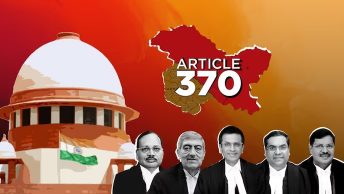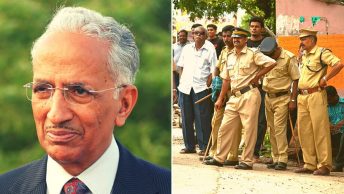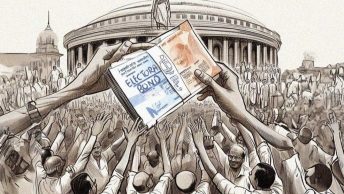With Law and Other Things turning fifteen years old, I thought it might be useful to look back on how the institution and functioning of the Indian Supreme Court has changed – or not – in this time. Thankfully for me, this is also the period of the Court I am most familiar with as I started clerking for Chief Justice Sabharwal in 2006, an opportunity for which I will always be thankful. After clerking I was then able to write some on the Court, even if I have written much less often in the past few years.
As seems perennially true, there are a number of recent calls to reform the Court’s structure and functioning. For example, in August, former Home Minister P Chidambaram recommended transforming the present Supreme Court into five courts of appeal and a seven judge constitutional court; assigning cases to benches randomly; and guaranteeing the salaries of judges post-retirement so to limit the potential influence of post-retirement government appointments. To deal with the Court’s expansive workload, which often distracts it from constitutional maters, Tarunabh Khaitan suggested in an article earlier this year creating either separate appellate and constitutional courts, or separate divisions within the Supreme Court, and eliminating oral hearings for the Court’s large SLP docket (LAOT had an excellent roundtable on this piece earlier this year).
These recommendations draw on a set of suggestions about reforming the Supreme Court that have existed for decades to address a range of perceived ills, from taking on its infamous backlog, to promoting judicial independence or accountability, or improving the quality, and consistency, of the Court’s jurisprudence.
But amidst these frequent calls to reform the Court, what institutional change has actually occurred in the last fifteen years?
Certainly, the Court has not tamed its sprawling, and congested, docket. There are also serious new concerns concerning the independence of the institution and its ability to credibly check the current Executive that is not distracted, or restrained, by coalition rule. In 2017, Pratap Bhanu Mehta could lament, “The Supreme Court of India is facing its worst crisis of credibility since the Emergency”, and arguably these concerns have only increased.
I want to flag three events since the blog’s founding impacting the Court’s structure and functioning that I think are particularly notable (although they are certainly not the only important developments). I will then highlight some developments in our academic understanding of the Court and end with a few brief observations about how future institutional change might occur.
(1) Continued Growth of the Court. Perhaps the most predictable change to the Court over the past fifteen years has been the increase in the number of its judges. To accommodate its ever-expanding caseload, Parliament continues to expand the size of the Court. When the blog began there were 26 judges, including the Chief Justice. In 2009, the Court expanded to 31 judges and, in 2019, to 34. Many have criticized the logic that has led to this expansion. For example, the Court tends to focus on error correction in its caseload rather than the development of legal principles and oral hearings for admission matters take a significant amount of the Court’s time.
The consequences of this drift towards an ever-larger Court are substantial. The Court, through its structure, seems to be committing itself to applying significant scrutiny to High Court and to tribunal decisions for the foreseeable future. After all, if it did not, what would all its judges do? The system also seems like it is becoming even more difficult to govern. There were already longstanding concerns that benches disagreed with each other implicitly or explicitly creating confusion in precedent. More judges, and benches, only adds to the Court’s polyvocality. Further, with more judges, it is difficult for Supreme Court judges themselves to reach agreements about how the Court as an institution should be governed going forward.
(2) New Pressure on the Collegium System. In 2014, the BJP-led government enacted a constitutional amendment that created a National Judicial Appointments Commission (NJAC) that would govern the promotion and transfer of judges in the higher judiciary. In 2015, the Supreme Court struck down this amendment, finding that the NJAC violated the basic structure of the Constitution, amidst concerns about too much non-judicial representation on the Commission, and restored the old collegium system. I think there are likely many more insights about the Court as an institution that scholars can still learn from this episode, but it showed both how difficult it is for Parliament to reform the Court as an institution, as well as how dangerous such reform could potentially be to judicial independence.
Yet, as others have pointed out the government has still seemed to be able to influence the appointment of judges. Starting, but not ending, with the government sitting on the recommended appointment of Gopal Subramanium to the Supreme Court, the government has been able to exercise a pocket veto, or at least a delay, on judges recommended by the collegium.
(3) Increased Concern over the Chief Justice and Judicial Independence and Accountability. There has always been concern about the disproportionate dominance of the Chief Justice in the Indian Supreme Court, given their ability to assign cases and set benches. 2018 brought this issue to the public’s attention in a new way with four sitting judges taking the unprecedented step of hosting a press conference raising concerns about the “allocation of cases” by the Chief Justice. Since then there has been continued concern about how this power can be used to send cases to certain benches that might be more inclined towards the government.
Notably, there have also been questions raised about the role of the Chief Justice in responding to accusations of corruption or sexual harassment against the Chief Justice in ways that would seem to create a conflict of interest. The vesting of both “master of the roster” and disciplinary powers in the Chief Justice has helped fuel a legitimacy crisis for the Court that undermines its mission. One might imagine a system that empowers a strong Chief Justice would be more likely to act as a significant check on the Executive, but, at least recently, it has arguably weakened the Court’s ability to check the Executive.
What is perhaps most striking about all of these institutional developments though is their continuity, whether it is the continued growth of the court; the continued assertion of the Court over its own appointment process; or the continued concern about the independence of the Institution and the accountability of judges when they are accused of wrongdoing. An observer of the Court fifteen years ago might be surprised about some of the specific turns and twists of the last fifteen years, including shifts in the Court’s jurisprudence or the relative power of the current government, but they would not be surprised these were central debates surrounding the Court’s functioning.
During this same period, academic work on the Court has expanded considerably and there is now a group of scholars and experts studying the institution in a manner that did not exist when the blog began. When I first started writing on the Court’s caseload the primary previous research had been done by Rajeev Dhavan. His extensive and pioneering work, such as The Supreme Court Under Strain (1978), is still vital to understanding the institution. I was able to gain access to additional internal data about the Court’s caseload. This was able to shed insights into how much of the docket is taken up by relatively routine cases, provide some sense about the Court’s acceptance rates, and flag issues like appeals to the Court seemingly coming disproportionately from Delhi and surrounding regions.
Similarly, fifteen years ago there was relatively little external data collected about the Court. George Gadbois had his famous studies on Indian judicial behavior and the judges themselves, but there was little other data-based analysis, and almost nothing that had been undertaken in recent years. There has been an incredible blossoming of such research since 2005, including by contributors on this blog such as Aparna Chandra, Tarunabh Khaitan, and Abhinav Chandrachud. As a result, we now have a significantly better understanding of the social background of litigants and their relative success at the Court, the role of SLPs in expanding the Court’s docket, the decline of constitution benches, disproportionately low chief justice dissent rates, the listing practices of the Court, the Court’s general low dissent rates, the informal selection criteria for appointment of judges, the post-retirement positions of judges, how the Court uses its time, the citation patterns of the Court, and the role of senior advocates in the operation of the institution, among other topics.
This has all been important, frequently groundbreaking, work. That said, it is not clear what its effect on judicial reform will be. More knowledge does not always lead to change. Nor do (even well informed) calls for reform. Recently, Robert Samuelson of the Washington Post retired after writing on economics for over 50 years. He noted somewhat wryly in his last column that despite having a weekly column in a major US paper for much of this time, “So far as I can tell, nothing that I have written has ever had the slightest effect on what actually happened.”
So what, if anything, is likely to change in the functioning of the Supreme Court in the next fifteen years and what might cause it to occur? I certainly do not have any crystal ball, but it strikes me there are at least four ways reform might proceed.
The first, and perhaps the easiest guess, would be that there is not actually any major reform at all. There is plenty of momentum behind the Court’s current structure and it is not unlikely that the Court will keep hearing an expansive number of cases, continue expanding as a result (42 judges in 2035?), its independence will continue to be threatened, and any accountability for judges will be a muddle, but the institution will carry on. After all, many highest courts around the world have well recognized design defects, but political forces and institutional momentum conspire to make change difficult (just consider the long lampooned selection process of justices of the U.S. Supreme Court).
A second option is that the government could again attempt to reshape the Court, perhaps because a new government comes into power or there is new motivation within the current government. This could lead to a NJAC II or a serious attempt at reorganizing the Court. Depending on the view of the Court towards the reform (particularly the view of the sitting Chief Justice), such reform could move forward without a major challenge by the Court itself or lead again to contestation.
While there are clearly dangerous outcomes in such government-pushed reform, there are also ones that would likely be beneficial and that the Court itself would almost certainly welcome. For example, increasing the retirement age of judges or guaranteeing them lifetime salaries would be a clear improvement that the Court would likely happily accept – even if such a change would have to address how it would disproportionately extend the tenure of the then Chief Justice.
Third, reform can be driven by the Court itself. For instance, the Court could create new guidelines for the types of SLPs it will admit (a Constitution bench took a pass at this issue in 2016) or increase transparency in the collegium’s appointment process. Or a Chief Justice could change how cases are assigned or create informal or formal benches for certain topics like tax or the environment (this approach has been tried by different Chief Justices off and on over the years with varying success). It is not at all clear though that any of these reforms would last past the term of the Chief Justice that had implemented them.
Fourth, there could be changes in the dynamic of the legal profession that could lead to reform. For example, the bar has long been an impediment to getting rid of oral arguments for admission matters. Indeed, the first lawyer strike at the Supreme Court in 1982 was in response to a memo that had suggested the Court might dispose of oral hearing for some matters. Some have suggested that if the profession switched to hourly billing, instead of by appearance, this would reduce the resistance of the bar to changes that reduce the number of hearings.
Finally, maybe academics and policy experts might matter (a nice thought for a blog like Law and Other Things). A much thicker ecosystem of legal scholars, policy analysts, and informed journalists has emerged in the past fifteen years that can provide significant insights about the Court, better clarify the goals of reform, and develop and refine reform proposals. These actors not only provide new knowledge, but can attempt to mobilize key actors in the reform process, like government, judges, or the bar. These actors are unlikely to spark change by themselves, but they can certainly take advantage of potential reform moments to promote better outcomes.
I will certainly be curious to see how the Court has, or has not, developed in another fifteen years. No matter how the Court has changed by then, I fully expect that Law and Other Things will continue to be a vibrant community where discussions of the Court help contribute to and further an informed debate.
All Opinions Expressed in this Post Are My Own







Can you be more specific about the content of your article? After reading it, I still have some doubts. Hope you can help me.
Can you be more specific about the content of your article? After reading it, I still have some doubts. Hope you can help me.